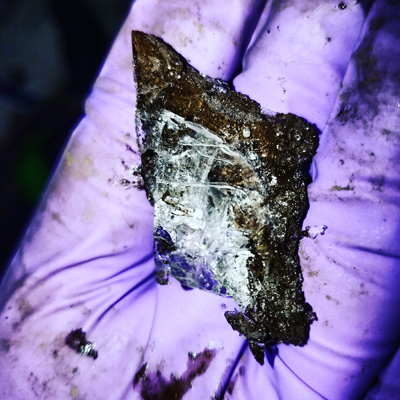Soil Science Society of America
5585 Guilford Road • Madison, WI 53711-5801 • 608-273-8080 • Fax 608-273-2021
www.soils.org
Twitter | Facebook
NEWS RELEASE
Contact: Hanna Jeske, Associate Director of Marketing and Brand Strategy, 608-268-3972, hjeske@sciencesocieties.org
How does the freeze-thaw cycle impact soil?
Jan. 15, 2019 – Winter soil freezes, heaves, and moves! The Soil Science Society of America (SSSA) Jan. 15 Soils Matter blog looks at the freeze-thaw cycle, how it changes soil on a microscopic level, and the reaction of Alaska’s unique permafrost soils.
 “Freezing deforms the soil,” writes blogger Erin Rooney. “Frost heaving allows mineral subsurface layers–or horizons–to be squeezed up through the soil. This moves horizons from lower to higher. This feature is known as a ‘mud boil’ or ‘frost boil.’” Rooney is a graduate fellow at Oregon State University.
“Freezing deforms the soil,” writes blogger Erin Rooney. “Frost heaving allows mineral subsurface layers–or horizons–to be squeezed up through the soil. This moves horizons from lower to higher. This feature is known as a ‘mud boil’ or ‘frost boil.’” Rooney is a graduate fellow at Oregon State University.
But the icy drama doesn’t stop with what human eyes can see. The cracks, freezing, and expansion can occur on a tiny scale as well. This can release minerals and further change the soil’s composition.
In the case of Alaska’s permafrost soils, the changes may keep coming. “These soils have stored an estimated 40% of Earth’s terrestrial organic carbon for centuries. The soil’s ability to continue storing carbon belowground will depend on soil resilience to changes in the climate. These changes include increasing variability in winter air temperature and the resulting increase in freeze-thaw cycles.”
To read the entire blog post, visit https://soilsmatter.wordpress.com/2019/01/15/how-does-the-freeze-thaw-cycle-impact-soil/.
Follow SSSA on Facebook at https://www.facebook.com/SSSA.soils, Twitter at SSSA_Soils. SSSA has soils information on www.soils.org/discover-soils, for teachers at www.soils4teachers.org, and for students through 12th grade, www.soils4kids.org.